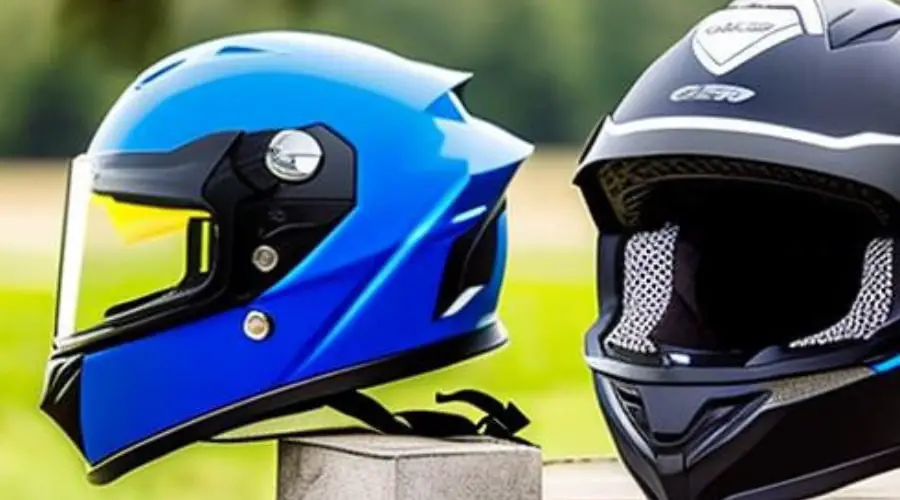As a motorcycle rider, choosing the right helmet is one of the most important decisions you will make. Your helmet is the most critical piece of safety equipment you own, and it can be the difference between life and death in the event of an accident. In this guide, we will help you choose a safe motorcycle helmet by covering the following topics:
Importance of Wearing a Motorcycle Helmet
Before we dive into the details of choosing a safe motorcycle helmet, it’s important to understand why wearing a helmet is so crucial. A helmet can protect your head from serious injury in the event of an accident. According to the National Highway Traffic Safety Administration (NHTSA), wearing a helmet can reduce the risk of a fatal head injury by 37%.
Types of Motorcycle Helmets
There are four main types of motorcycle helmets: full-face helmets, modular helmets, open-face helmets, and half helmets.
Full-Face Helmets
Full-face helmets provide the most protection because they cover your entire head and face. They are popular among sportbike riders and racers because they offer the best protection at high speeds. They also provide the best protection in cold weather because they cover your entire face.
Modular Helmets
Modular helmets are a hybrid between full-face and open-face helmets. They have a chin bar that can be flipped up, allowing you to talk or eat without taking off your helmet. They are popular among touring riders because they offer good protection and ventilation.
Open-Face Helmets
Open-face helmets, also known as three-quarter helmets, cover the top and back of your head but leave your face exposed. They are popular among cruiser riders because they provide good ventilation and visibility. However, they offer less protection than full-face or modular helmets.
Half Helmets
Half helmets, also known as brain buckets, only cover the top of your head. They offer the least protection and are generally not recommended.

Helmet Safety Standards
When shopping for a motorcycle helmet, it’s important to look for helmets that meet safety standards. There are three main safety certifications: DOT, ECE, and Snell.
DOT Certification
DOT stands for the Department of Transportation. Helmets that meet DOT standards have been tested to ensure they meet minimum safety requirements. DOT helmets are legal in the United States and are a good choice for most riders.
ECE Certification
ECE stands for the Economic Commission for Europe. Helmets that meet ECE standards have been tested to ensure they meet safety requirements in Europe. ECE helmets are legal in the United States and offer slightly more protection than DOT helmets.
Snell Certification
Snell is a non-profit organization that tests helmets to ensure they meet high safety standards. Snell-certified helmets are the most protective and are recommended for racing or high-speed riding.
Helmet Fit
Choosing the right helmet size and shape is critical for both comfort and safety.
Helmet Size and Shape
To find the right helmet size, you need to measure the circumference of your head. Using a measuring tape, measure around the widest part of your head, which is usually just above your eyebrows and ears.
Once you have your head measurement, consult the manufacturer’s sizing chart to find the right size. Keep in mind that different helmet brands and models may have different sizing, so it’s important to measure your head for each helmet you consider.
In addition to size, you also need to consider the shape of your head. Some helmets are designed for round heads, while others are designed for oval heads. Trying on helmets in person is the best way to determine which shape is right for you.
Comfort and Fit
A helmet that fits properly should feel snug but not too tight. It should not move around on your head, and the chin strap should be tight enough to keep the helmet securely in place.
Pay attention to the pressure points on your head when trying on helmets. A helmet that is too tight in certain areas can cause discomfort or headaches, while a helmet that is too loose can be noisy or move around on your head while riding.
Helmet Features
When choosing a motorcycle helmet, there are several features to consider.
Ventilation
Good ventilation is important for comfort, especially in hot weather. Look for helmets with vents that can be opened or closed to control airflow.
Visors
Visors protect your eyes from the sun and wind. Look for helmets with visors that are easy to adjust or remove.
Noise Reduction
Some helmets are designed to reduce wind noise, which can be especially important for long rides. Look for helmets with features like wind deflectors or noise-reducing padding.
Weight
The weight of a helmet can impact comfort, especially on long rides. Look for helmets that are lightweight but still offer good protection.
Padding
The padding inside a helmet can impact comfort and fit. Look for helmets with removable padding that can be washed or replaced.
Helmet Care and Maintenance
Taking care of your helmet can help extend its lifespan and ensure it continues to offer good protection.
Cleaning Your Helmet
Clean your helmet regularly using mild soap and water. Avoid using harsh chemicals or abrasives that can damage the helmet’s finish or padding.
Helmet Lifespan
Helmets have a limited lifespan and should be replaced every five years, even if they have not been involved in an accident.
Helmet Replacement
If your helmet has been involved in an accident or has visible damage, it should be replaced immediately. Even if there is no visible damage, the helmet’s ability to protect your head may have been compromised.
FAQs:
How do I know if my helmet fits properly?
A properly fitting helmet should feel snug but not too tight. It should not move around on your head, and the chin strap should be tight enough to keep the helmet securely in place. Make sure to try on helmets in person to find the right fit for your head shape.
How often should I replace my motorcycle helmet?
Helmets have a limited lifespan and should be replaced every five years, even if they have not been involved in an accident. If your helmet has been involved in an accident or has visible damage, it should be replaced immediately.
What is the difference between DOT and Snell-certified helmets?
DOT and Snell are two different safety certifications for motorcycle helmets. DOT (Department of Transportation) is a minimum safety standard required by law in the United States. Snell is a higher safety standard that tests helmets more rigorously than DOT. Snell certified helmets are generally considered to offer better protection.
Can I wear a bicycle helmet while riding a motorcycle?
No, bicycle helmets are not designed to offer the same level of protection as motorcycle helmets. Motorcycle helmets are designed to protect your head from impacts at higher speeds and forces than bicycle helmets.
How important is it to wear a helmet when riding a motorcycle?
Wearing a helmet is essential for protecting your head in the event of an accident. Studies have shown that wearing a helmet can reduce the risk of head injury by up to 69% and the risk of death by up to 42%. It is important to always wear a helmet when riding a motorcycle, regardless of your skill level or experience.
Conclusion
Choosing a safe motorcycle helmet is essential for protecting your head in the event of an accident. When choosing a helmet, consider the type of riding you will be doing, safety certifications, fit and comfort, and helmet features. Taking good care of your helmet can help ensure it continues to offer good protection for years to come.
Helmetslab is a website that focuses on providing in-depth reviews and information about different types of helmets, including motorcycle helmets and others helmets. I am writing a post with proper research on the info that helps helmet users.
